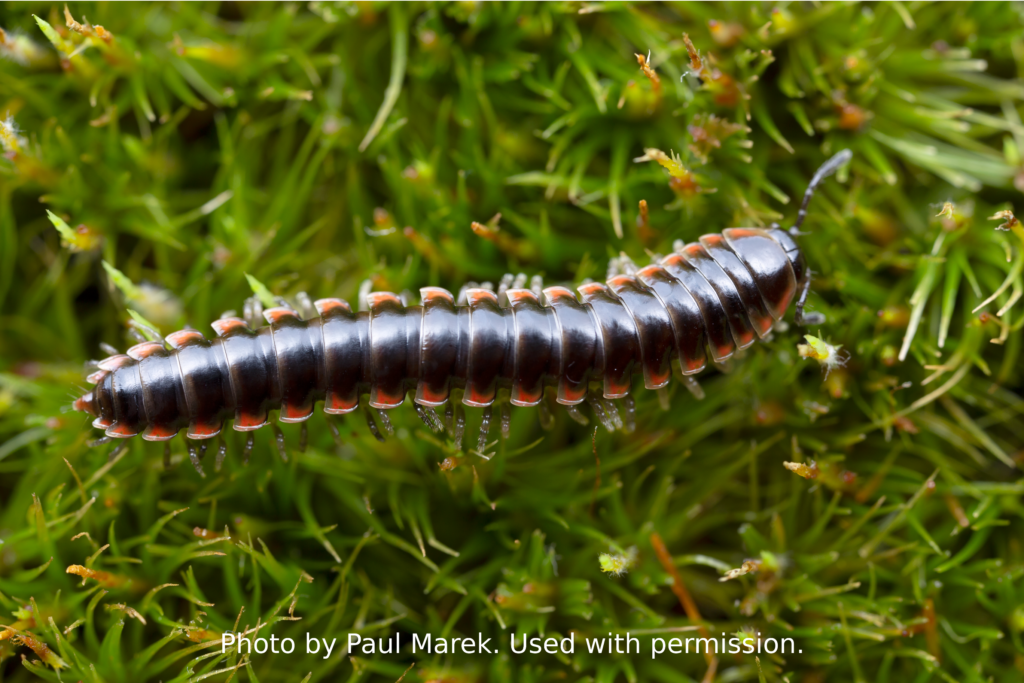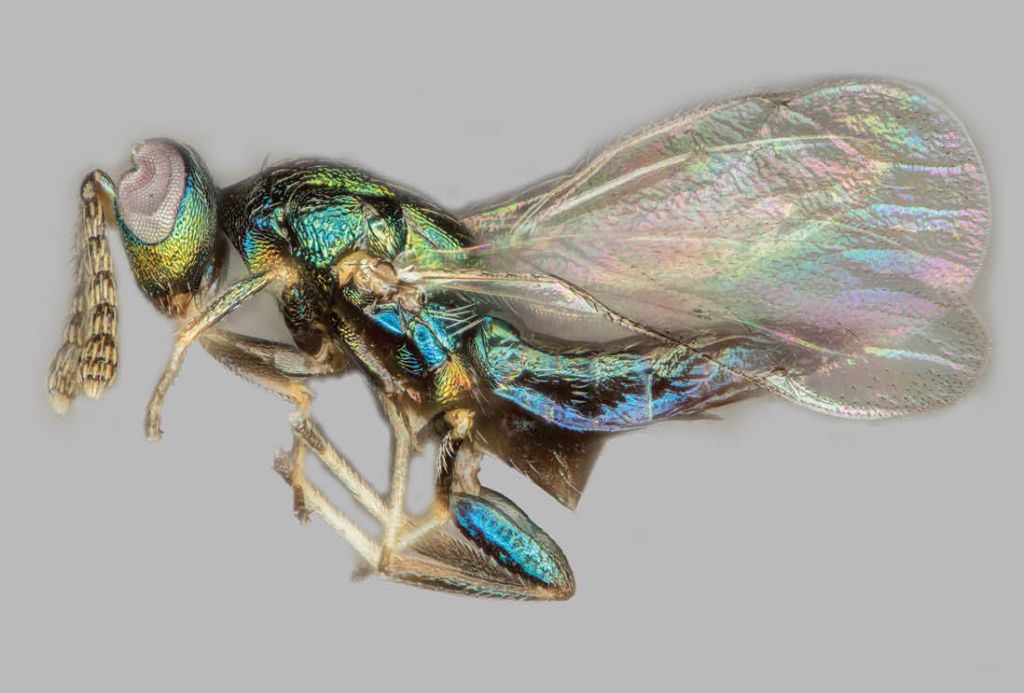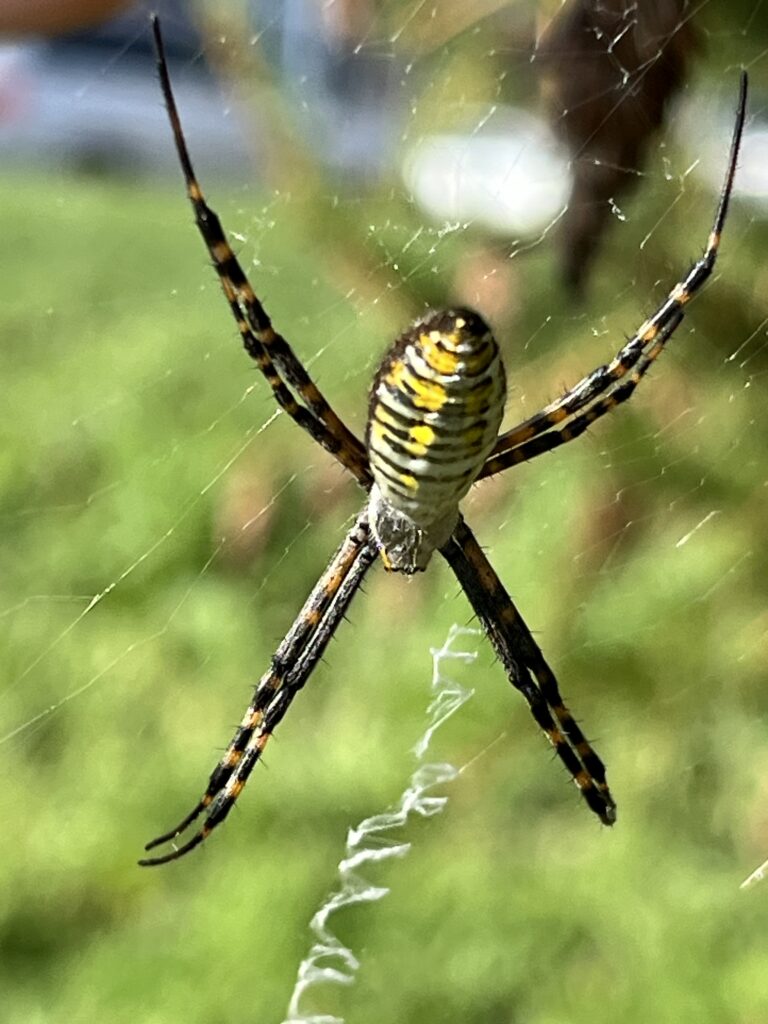Biology, especially at the molecular level, has blossomed over the past century, but our knowledge of natural history remains scant compared to our ignorance. We continue to be surprised by the sheer variety of organisms, and the ways in which these myriad lifeforms make a living on earth. In 2021, for example, a new species of millipede — a handsome, chestnut colored, many-legged beast about two centimeters long with orange and red highlights on the flared tips of its flattened body segments — was discovered by millipede master, Paul Marek, crawling through the moss among centuries-old trees. The patch of forest where it was found sits in a hotspot for millipede diversity. This patch was not in a distant rainforest or tropical jungle. It’s here in the Appalachian mountains of Virginia. In fact, this new kind of animal was found on the campus of Virginia Tech, right under the noses of generations of scientists.1

The discovery of new species in our backyards is not as uncommon as one might think, even two and half centuries after Linnaeus formalized the binomial naming system we use to label species. Nor is there a shortage of astonishing behaviors and physiological miracles waiting to be uncovered for species named and unnamed alike. Take, for instance, the crypt-keeper wasp.2 In 2017, Scott Egan — possessed of a keen naturalist’s eye — noticed swellings in oak branches along a Florida beach. Recognizing these as the protective growths induced by gall wasp larvae, he took some back to his lab to see what wasp would emerge. To his surprise, some never quite emerged at all, their little wasp heads left jammed in a borehole too small for their bodies. Upon cutting open the crypt in which the unsuccessful wasps were entombed, Egan got another surprise: a second wasp — a so called “crypt keeper” that had parasitized the first. This second, iridescent green hyperparasite begins as an egg laid in the chamber of the first wasp larvae which it then consumes. At some point, the crypt-keeper compels its host to drill a hole in the hard wood of the crypt wall, but just large enough for the smaller crypt-keeper. The poor doomed host then blocks the hole with its head, and it is through the hollowed out forehead of its host that the adult crypt-keeper ultimately emerges.

Just recently in 2023, a group of biologists were exploring a lowland rainforest in the misty Costa Rican evening, when they happened upon a puzzling spider construction.3 Rather than a complete orb or the early frame for one yet to be completed, they spied a leaf with many long threads radiating outward from its margins to the surrounding vegetation. That is not a normal construction for the typical orb weaver. Firmly affixed to one of these threads was a drift line, a thread released by an orb weaver from higher up on a firm platform. Normally, such lines are paid out by weavers until the breeze carries the other end of the thread to a second anchor point. Once it sticks, the weaver would slide across, secure the thread, and by repeating the process, lay out the frame for a web. In this case, the gathered naturalists saw a juvenile weaver begin to slide down its drift line, unaware that it had snagged on some other spider’s silken thread instead of a tree branch. Astonishingly, that other spider emerged from a leafy hiding place to pursue the juvenile weaver as prey. They had just witnessed a hunting method — laying silk lines to ensnare the drift lines of other spiders — that no one had imagined before. This finding demonstrates that even the most familiar sorts of invertebrates yet harbor mysteries. As Gustavo Hormiga, who helped described and name the species with the novel hunting strategy put it, “[t]he finding also underscores the need for old-school natural historians … the kind of scientists who wander out at night with a head lamp to see what there is to find.”4

As difficult as it is to imagine the diversity of life’s forms — the shapes, colors, and sizes of all that we’ve named — it’s all that much harder to conceive of the vast and varied ways in which those forms make a living in their environments, surrounded by a cast of millions. For most invertebrate species, we know next to nothing. What do they eat? What physiological, mechanical, cellular, or chemical adaptations make that possible? With whom do they interact? How long do they live? Do they tend their young? Do they ever see their young? Are they obligate carnivores? Omnivores? What sorts of behaviors let them fill a niche nothing else does? The questions — and the variety of answers — are boundless. And yet the answers are precious. Life is a miracle that, so far as we know for sure, has occurred only once. It’s the most complex, and arguably most valuable, phenomenon within our ken. If you want to understand life, you need to understand where, when, and how life happens. But to do that, you need naturalists.
Naturalists are those who practice natural history, that is, “the study of life at the level of the individual—of what plants and animals do, how they react to each other and their environment, how they are organized into larger groupings like populations and communities.”5 As a recent survey demonstrates, an overwhelming majority of early-career scientists and professionals in ecological and environmental sciences indicated that natural history is “essential” or “desirable” for their present line of work, and most thought it foundational to a wide range of studies, particularly general ecology, conservation biology, and restoration ecology.6 The knowledge of organism habitat, lifespan, range, abundance, interactions and so on provides the foundation on which ecological, biological, ethological, and conservation theory and practice rest. Laboratory studies are invaluable for unraveling cause and effect, but without natural history, laboratory work is without inspiration or appropriate scope. Practically speaking, natural history provides data essential to identifying novel natural compounds with pharmaceutical potential and knowledge of the plant varieties and plant-animal interactions essential for developing solutions to food insecurity. Everything that the ecology and conservation science touches depends in some part on detailed natural history work.7
Though the centrality of natural history is recognized by scientists and professionals alike, education and training in natural history is scarce and becoming more so. Just 11% of survey respondents in the study mentioned above thought that their academic training provided the needed exposure to natural history concepts and approaches. For US institutions, the median minimum number of natural-history courses needed to earn a BS degree in biology has, since 1995, been 0. Students are left to self-educate when it comes to the techniques and knowledge of natural history in their chosen areas of research.8 This crisis of education is mirrored in a crisis of funding. There is essentially no funding for the practice of natural history.
Natural history can only be done through observation of living things in their natural environment. Novice natural historians need time in the field to hone their skills for structured observation, and skilled naturalists need time and money to pursue their craft. But the usual sources of financial support for such scientific work—federal funding agencies like the NSF—are unwilling to fund work that is not experimental or hypothesis-driven. Therefore, naturalists are forced to undertake their natural history work as uncompensated labor without grant support in order to support the very experimental and theoretical work that grants fund. This is to say nothing of the talent that might otherwise be attracted to natural history work who simply never enter the field for lack of funding.
VII is working to redress the funding gap for work on the natural history of western Virginia. By establishing an endowment fund to support an annual natural history study grant, talented naturalists will receive the support they need to conduct open-ended field work with invertebrates. This work—presented in publicly accessible, open-access venues like Banisteria—will start to fill in some of the blanks in the book of invertebrate life. We at VII are committed to paying witness to the myriad ways of invertebrate life and their rearrangement and extirpation in a rapidly changing world.
References
- https://news.vt.edu/articles/2021/03/CALS-ent-hokie-millipede.html?utm_source=cmpgn_news&utm_medium=email&utm_campaign=vtUnirelNewsDailyCMP_030521-fs ↩︎
- https://www.theatlantic.com/science/archive/2017/01/inception-but-with-parasites/514211/?utm_source=copy-link&utm_medium=social&utm_campaign=share ↩︎
- https://www.sciencenews.org/article/cannibal-pirate-spiders-web-arachnid ↩︎
- https://www.sciencenews.org/article/cannibal-pirate-spiders-web-arachnid ↩︎
- Bates, Marston. The Nature of Natural History. Princeton University Press. Princeton, NJ, 1990. p. 7. ↩︎
- https://doi.org/10.1093/biosci/biw043 ↩︎
- https://doi.org/10.1093/biosci/biu032 ↩︎
- https://doi.org/10.1093/biosci/biw043 ↩︎